CAMPAGNA FINANZIATA AI SENSI DEL REGOLAMENTO CE N. 1308/13
CAMPAIGN FINANCED ACCORDING TO (EC) REG. N. 1308/13
THE CONCEPT
March 2020, due to the outbreak of COVID-19 as everybody else, we have been forced to slow down, and in some moments, even to stop. However, we took advantage of this forced break to take a deep breath, look around and reflect.
Since ancient times and for many years, wine has been associated with health benefits; it was used as an antiseptic, pain reliever, to treat dermatological problems and digestive disorders.
However, its positive effects on human health have been highlighted thanks to a large-scale epidemiological study, from which resulted the so-called French paradox. This study found a lower incidence of coronary heart disease in France, despite it was characterized by a diet rich in saturated fats (butter, lard...) and, therefore, it was at high-risk for such diseases. This data was interpreted as a consequence of moderate consumption of red wine.
This inverse relationship between mortality and wine consumption in different countries is very well shown in the graph as reworked by Lindberg and Amsterdam, obtained from the study of Leger and collaborators1 (fig. 1).
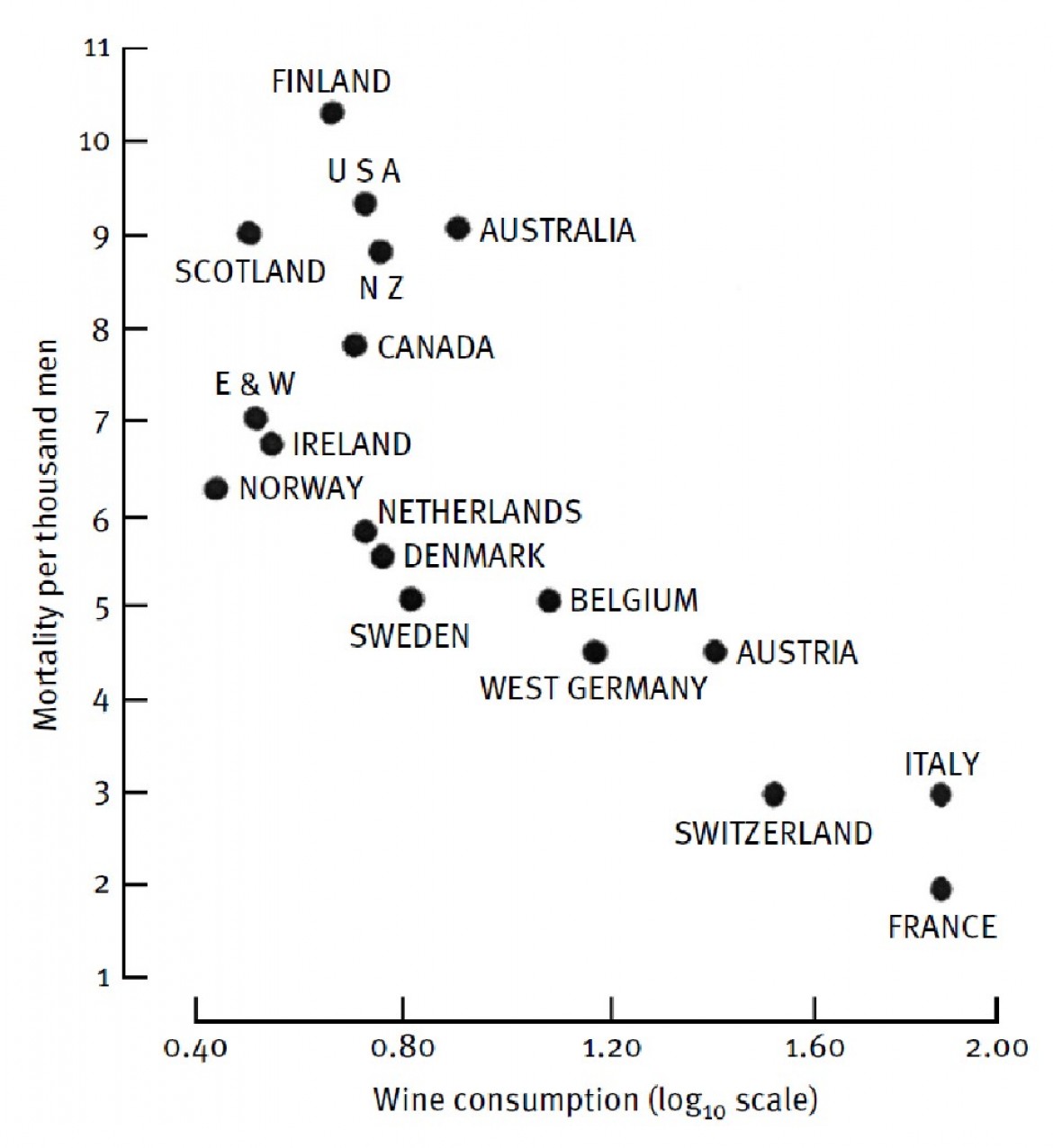
As can be noticed, with the increase of wine consumption, mortality decreases. The countries with the highest mortality rate are those with a diet other than the Mediterranean one, but this is not the case of France, where despite a non-Mediterranean diet (rich in saturated fat), there is a lower mortality rate.
Other epidemiological studies have also shown over time a relationship between the consumption of alcoholic beverages and mortality. Above all, a reduction in mortality has been demonstrated with moderate and constant consumption of alcoholic beverages.
As can be seen from the graph taken from the study by Klatsky and Udaltsova2 and reworked by Lindberg and Amsterdam (fig. 2), mortality rate is lower for moderate drinkers (1-2 times a day) while it increases for those who do not consume at all or those who have an excessive or binge compsuntion (5-6 times a day).
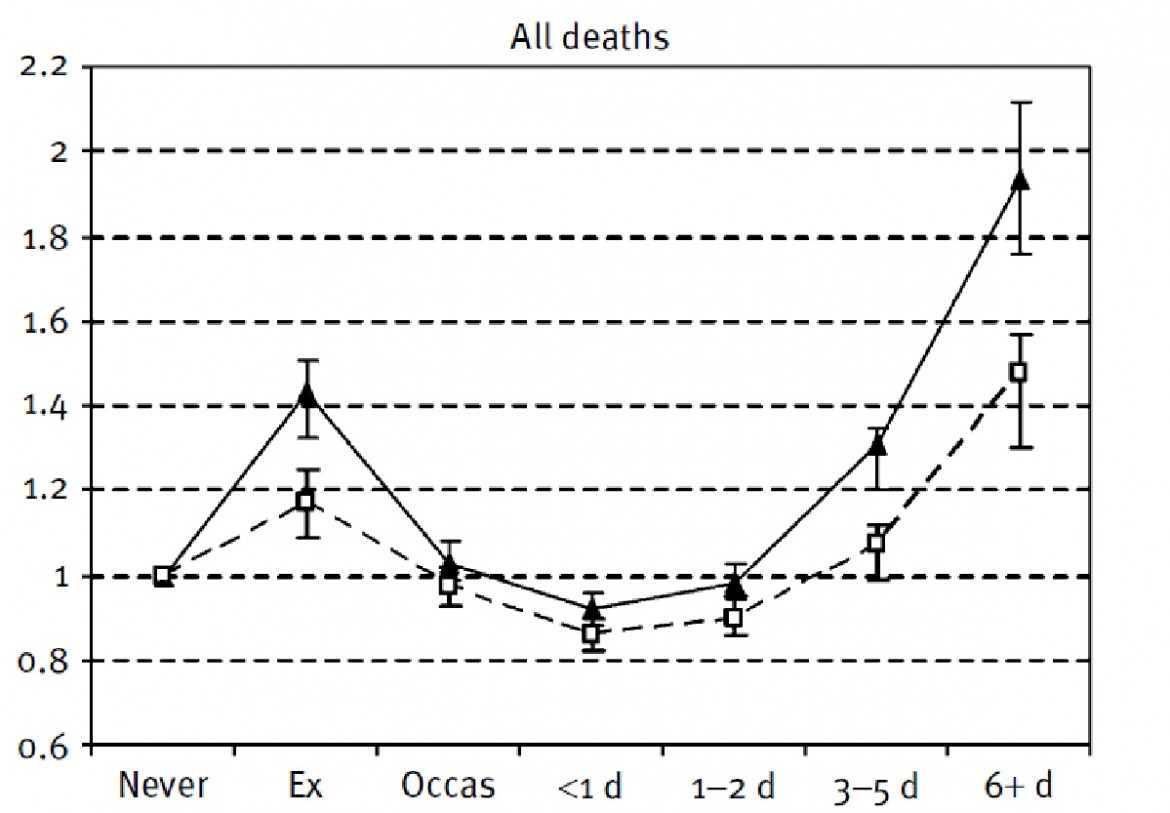
Fig. 2: J-shaped mortality curve demonstrating decreased mortality with moderate drinking and higher mortality with heavier drinking. Relative risk scores are listed on the y axis, and alcohol consumption on the x axis. The two data sets are with age and sex adjustment versus full adjustment for multiple variables. (As reworked by Lindberg and Amsterdam from the study by Klatsky and Udaltsova2).
J-shaped curves show a decreasing rate of mortality in the lower part (moderate drinkers) and an increasing trend in the starting part (people who do not drink alcohol at all) and in the final part (excessive drinkers).
Over the years, some criticisms have also been made against these epidemiological studies. It has actually been observed that the figure could be influenced by the fact that moderate drinkers are often those who have a better socio-economic condition, if compared with those who do not consume or are excessive drinkers, therefore lower mortality could also be due in part to a better quality of life. A definitive answer has not yet been reached in terms of epidemiological studies, however there is rather consolidated scientific evidence relating to the positive effects on the health of grapes (red fruits), grape juices, grape seeds extracts and grape peels. Very similar products are contained in wine, especially in the red one. These evidences therefore indicate positive effects of a moderate wine consumption on the health.
In addition, some scholars suppose that the combined effect of alcohol and polyphenols could even increase such benefits in wine thanks to the amplified availability of polyphenols contained in peels and seeds, due to the fermentation processes. During alcoholic fermentation and maceration, the polyphenols inside the cells of the skins and seeds are extracted and therefore made more available, which means easier assimilation by the human body.
The mechanisms responsible for the positive effect of wine on health are extremely complex, some have not yet been fully clarified, however it has been observed that they are mainly attributable to alcohol and polyphenols.
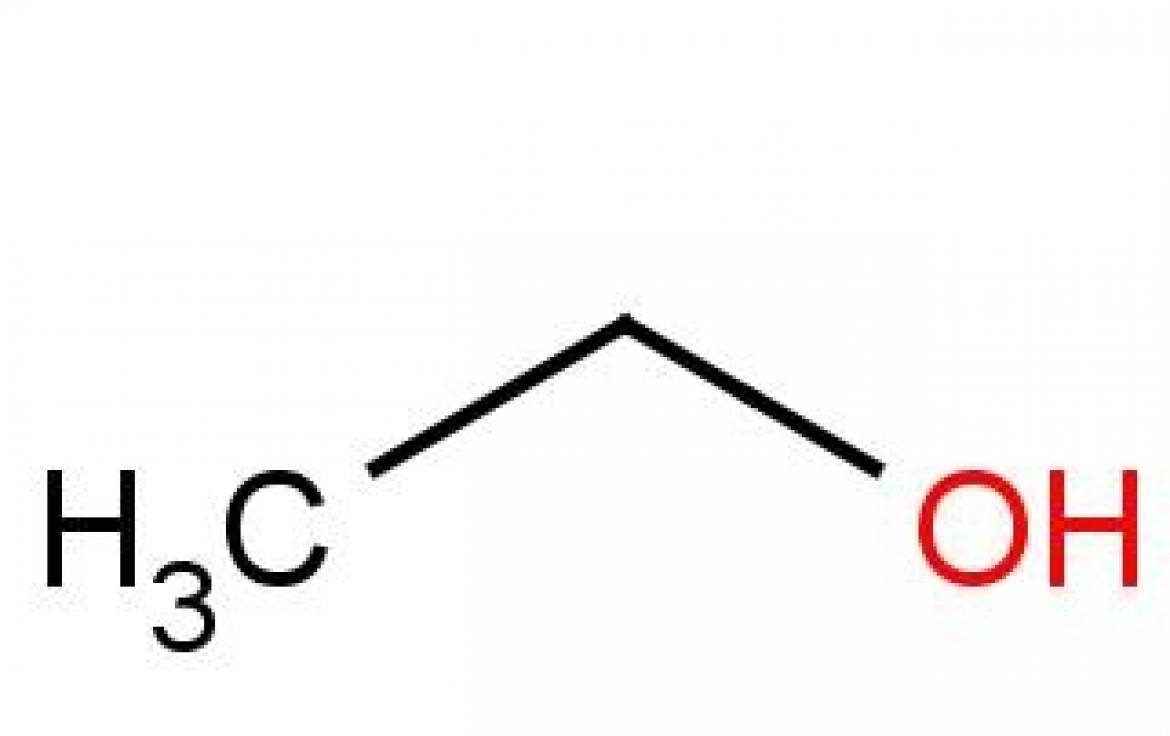
It is one of the products of alcoholic fermentation by yeasts, one of the macro constituents of wine and the quantities in wine range from 70 g / L (9% Vol) up to 140 g / L (18% Vol).
POLYPHENOLS
This grouping includes several molecules that can be divided into 2 larger groups: flavonoids and non-flavonoids. Those includes many different molecules that can be found in lower quantities than ethanol, ranging from 1 g/L to concentrations lower than 0.001 g/L. Nonetheless they do have considerable and peculiar influence on both the organoleptic features of the wine (color, flavor, structure ...) and in terms of health benefits (strong antioxidant activity). Here following we list some of such molecules.
AnthocyaninsThey come from the grape skin, are extracted during alcoholic fermentation and give the color to the red wines.
Below the representation of one type of anthocyanins, the malvidina.
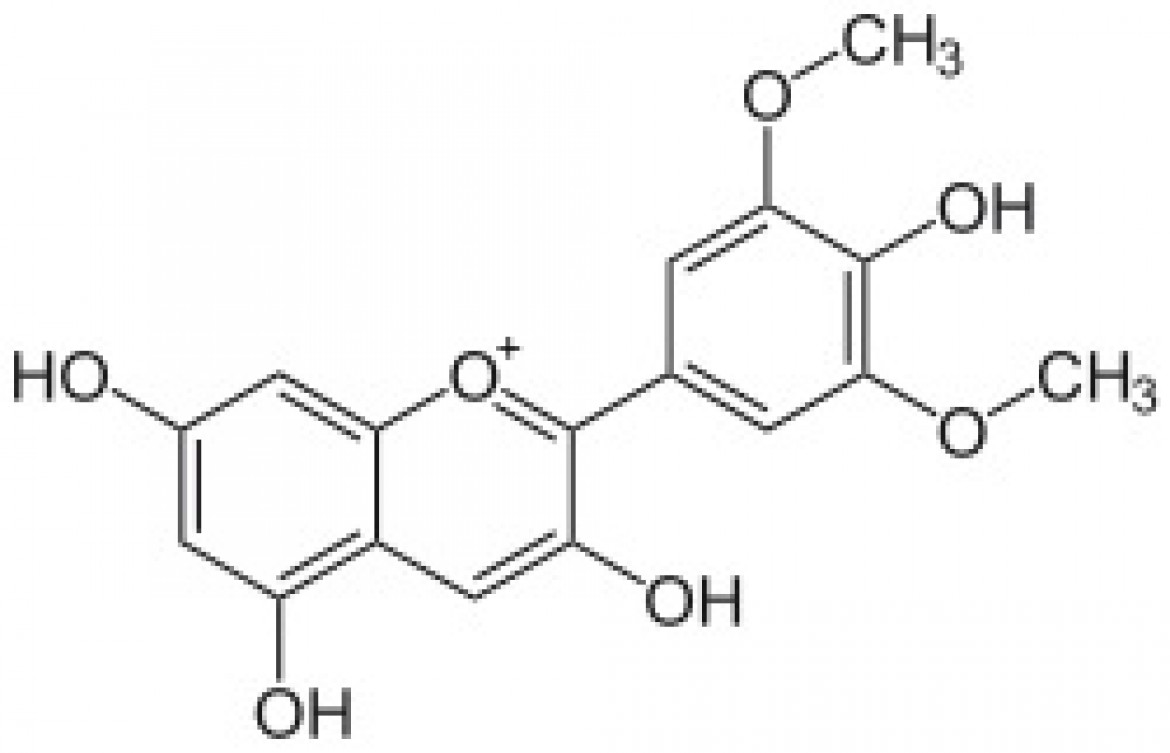
Tannins
They are contained in the grape skin, in the seeds and in the wood of the barrels. The firsts are extracted during fermentation, the last during refinement and are responsible for the structure of the wines. Tannins are very complex molecules and they formed by the union of single units called monomers. The tannins of the peel, for example, are formed by the union of 2, 5, or more than 10 monomeric units of catechin and epicatechin. The structure of epicatechin is represented in the image below.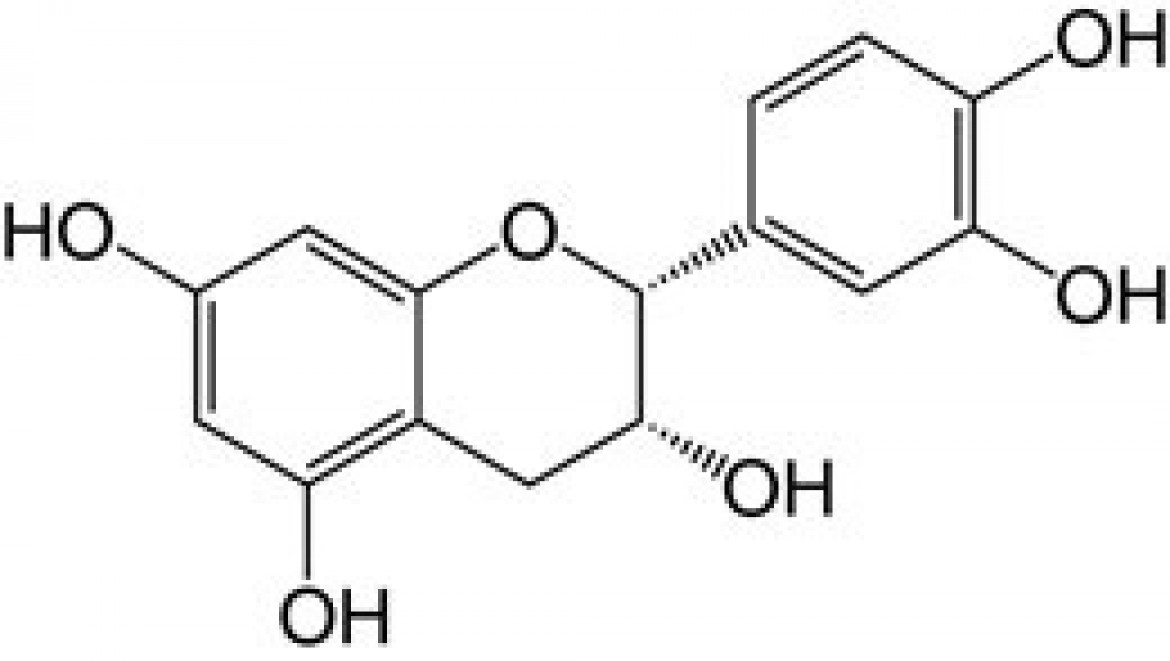
A peel tannin is composed of about ten of such units condensed (attached) together.
Resveratrol
It is contained in the skins of the grapes and it is produced by the vine to defend itself from fungal parasites attacks. It is extracted during the vinification process, especially in red wines, it has concentrations ranging from 0.001 to 0.003 g/L.
This polyphenol belongs to the stilbene family, very much studied for its benefits on human health and its pharmacological properties. Below is its structure:
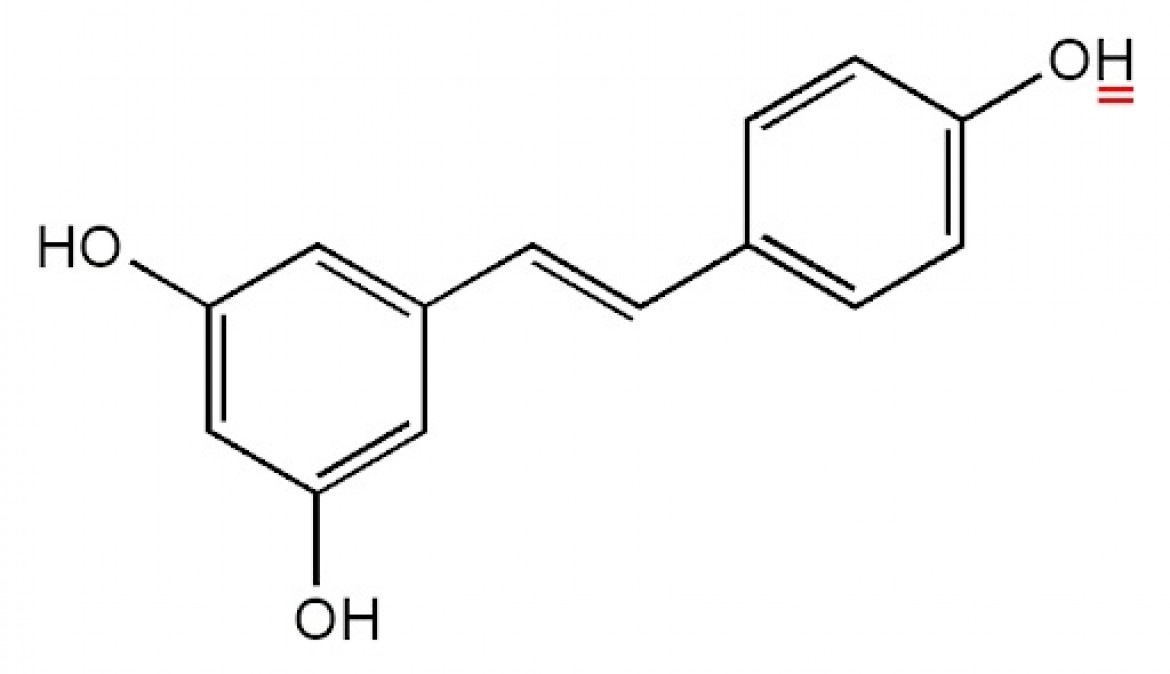
These are just some of the polyphenols contained in wines, in addition to many other molecules (cinnamic acids, quercetin...) each with different effects on the organoleptic properties of the wine, but also on the health, as they are all characterized by antioxidant activity.
Moderate wine consumption is associated with the increase in good cholesterol (HDL), which is important for the body to get rid of excessive cholesterol and in reducing the bad one (LDL), being the latter most of the times responsible for increased risk of arteriosclerosis, obesity and type-2 diabetes.
Wine consumption during meals is actually ideal because it helps human body in eliminating part of the cholesterol yet before it deposits.
This effect on lipids is due to the combined action of alcohol and polyphenols. The first is known to increase the levels of good cholesterol (HDL) while polyphenols have positive effects on the homeostasis (quantity) of cholesterol.
Also, to have real effects on lipids it must be clear that daily consumption (1-2 glasses per day) leads to maximum benefits, while this is not the case for occasional consumption.
In addition, the consumption of red wine could combat obesity by acting on appetite reduction, especially on women.
Lastly, as for the antioxidant effects, it is highlighted that red wines work better than whites.
Immunity function / inflammation
Chronic inflammation is a critical component of many diseases: obesity, cardiovascular problems, neurodegenerative diseases, diabetes, aging and some types of cancer.
Ethanol and polyphenols are able to modulate immune responses and the consumption of red wine can protect against various disorders of the immune system both by stimulating immune responses and by reducing inflammation.
Cardiovascular effect
Cardiovascular diseases (heart attack, angina pectoris, stroke) are the leading causes of death worldwide. Epidemiological studies show that moderate wine consumption is associated with a decrease in mortality due to cardiovascular diseases.
This benefit is attributed to the above-mentioned antioxidant properties, positive effects on lipids and anti-inflammatory effects.
In addition, it has been demonstrated that wine, especially red wine, acts on the cardiovascular system also at other levels: it has a positive effect on endothelial tissue (internal lining of blood vessels), slows down arteriosclerosis and decreases hypertension thanks to the relaxing vase action.
Most of these effects seem to be due to the antioxidant activity of polyphenols, however it seems that alcohol has an additive effect.
Cancer
Although it is known that alcohol is a carcinogenic substance, there is scientific evidence of a decrease in the risk of certain types of cancer (colon, ovary, prostate) associated with moderate wine consumption, thanks to the polyphenol effect.
Much of the studies related to the positive effects of wine on cancer prevention has focused on resveratrol.
Resveratrol suppresses the proliferation of a wide variety of cancer cells (lymph nodes, breast, prostate, stomach, colon, pancreas, thyroid, skin ...) and studies are so interested in such substance because it blocks the process of carcinogenesis at different levels: activation, initial phase, progression phase.
Resveratrol has been shown to have antioxidant, anti-inflammatory, anti-mutagenic, anti-metastatic, anti-angiogenic, and anti-proliferative activity.
Type-2 diabetes
Type-2 diabetes is characterized by reduced glucose disposal in peripheral tissues and overproduction of glucose by the liver.
It has been proven that moderate wine consumption can prevent the onset of type-2 diabetes, probably thanks to the antioxidant properties of red wine that could be responsible for this positive effect. This statement is supported by the positive effect of grapes and grape seed extracts on patients with type-2 diabetes.
In addition, resveratrol, quercetin, catechin and anthocyanins inhibit hyper-glycaemia.
Again there seems to be an additive effect due to the combination of alcohol and polyphenols.
Epidemiological studies and studies on animals have shown that moderate consumption of red wine can reduce the risk of developing neurological diseases such as dementia, stroke and Alzheimer's disease.
This effect is mainly due to alcohol, while the possible contribution of polyphenols has not yet been clarified.
Gastrointestinal effectsRecent studies have found that moderate alcohol intake is associated with a reduction in Helicobacter pylori infections, with a better association in wine than in beer.
Other positive effects of moderate wine consumption:
Toxic effects
All the positive effects listed so far are related to a moderate and continuous consumption of wine, that is, two glasses (300 ml) per day for men and one (150 ml) for women constantly.
Exceeding this doses may instead have opposite effects, increasing the risks of neurodegeneration, depressive disorders, obesity, weakening of the bones, hypertriglyceridemia, heart disease, hypertension, stroke and breast cancer.
Conclusion
There is wide evidence to support health benefits associated with regular and moderate consumption of wine, especially red wine, which is richer in polyphenols.
Alcohol increases the levels of good cholesterol (HDL), inhibits platelet aggregation and reduces systemic inflammation, while polyphenols have an antioxidant effect, decrease platelet aggregation and improve the endothelial tissue structure (internal lining of blood vessels). In addition, polyphenols act through various mechanisms of attenuation of the inflammatory response and of cardioprotective, neuroprotective activity and as a chemo preventive agent.
Since the positive effects are determined by alcohol and polyphenols, the wines with the best benefits are the most alcoholic and rich in polyphenols, therefore the most structured ones.
It should however be stressed that all the benefits associated with wine consumption, especially red wine consumption, are obtained with regular and moderate consumption. The recommended dose is 2 glasses per day for men (300 ml), 1 glass per day for women (150 ml) and consumption must be daily.
The positive effect of wine can be further enhanced by associating it with a healthy diet, such as the Mediterranean one.
The health effects associated with the Mediterranean diet, which combiness moderate wine intake with a diet rich in fruit, vegetables and whole grains also suggest that wine polyphenols have a synergistic effect with the other substances contained in such foods. Even adding wine to the diet of healthy people could lead to these additional benefits.
Bibliographic references: